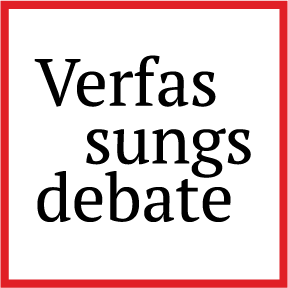Stopping the Davids, Shielding the Goliaths
The Supreme Court’s Assault on Collective Justice and the Saga of Birthright Citizenship
The day of reckoning is finally here. In Barbara v. Trump, an individual federal district court judge stopped the Administration’s birthright citizenship executive order nationwide. Just when the Supreme Court said this was not allowed in Trump v. CASA, a New Hampshire judge ordered universal relief, this time through a class action. You may be thinking that this is an “end-run” around Trump v. CASA. Certainly, the Trump Administration and even some Supreme Court justices would have you believe that. But that simple story is a trap. There is a big difference between a nationwide injunction that benefits non-parties and a class action that benefits class members. But what they have in common is that they both empower the “little guy” to enforce the rule of law. The Supreme Court has eliminated the former and is now trying to kneecap the latter.
The hurdles of class actions
The long-awaited Supreme Court decision in the birthright citizenship case, Trump v. CASA, was not about the merits, but about the remedy. All the courts below roundly concluded the Administration’s executive order declaring babies born to undocumented parents as non-citizens was highly suspect under the Constitution’s Fourteenth Amendment and over a century of precedent. Ironically, the question before the Supreme Court was not whether the government’s outrageous policy should go forward, but whether the lower courts should have stopped it nationwide. The Court answered no.
With only 20% of Americans able to afford a lawyer, very few people can protect themselves in a pinch from executive overreach. The rest are out of luck, unless they are part of a class action. Here, a plaintiff may represent a large group of similarly situated people who might not otherwise have their day in court. Unlike cases that provided non-parties injunctive relief, class actions must be vetted by a judge under the modern class action rule (Rule 23), to make sure there is due process for the plaintiff, defendant and class. Plaintiffs must clear an increasing gauntlet of hurdles to get a case approved of as a class action.
To be sure, some of those hurdles are appropriate. They ensure that it is efficient and fair to everyone for the case to be brought collectively. Normally, a person is responsible for bringing their own case. They get to call it – who, what, when, where, why and how to sue. But the class action rule for injunctions (Rule 23(b)(2)) flips this norm. It allows someone else to sue on their behalf, without their knowledge or consent. The surprising flip is allowed because the representative plaintiff’s interest is, practically speaking, the same as the class members. It’s as if each class member brought the lawsuit themselves. The rule ensures this by requiring that the named plaintiff’s claim is like the class’s (commonality, typicality) and that the defendant’s policy applies generally to the whole class, justifying a class injunction.
Class actions under siege
However, as I have written elsewhere, class actions have been under siege for decades. Powerful and wealthy actors (like the government and big corporations) often vilify such cases because they even the playing field and enable everyday people to bring one big case that will stop an illegal policy in one fell swoop. Aggregate litigation is a powerful tool which has been used to stop segregation, mass pollution, wage theft and more. Everyday folks can pool their resources to hire a lawyer, challenge systemic wrongdoing, and avoid retaliation. There is strength in numbers. Not to mention its efficiency. Imagine the time, money and burden involved if each person had to bring their own case against the same defendant for the same problem, over and over and over again. Groundhog Day! The modern class action rule (Rule 23(b)(2)) fixes that.
Rather than embrace this efficient tool, the Supreme Court has made collective actions harder. For example, the Court requires plaintiffs to put forth more evidence to show there is enough glue to hold the case together as a class action. Some justices have expressed outright disdain. Just recently, in his concurring opinion in Trump v. CASA, Justice Samuel Alito characterized the class action as a “potential significant loophole” which could lead to “potential abuses.” He urges courts to be “vigilant” and “rigorous” in applying the class action rule, and to limit aggregation to “discrete scenarios.” He invites defendants to immediately appeal class certification decisions that do not go their way.
In Barbara v. Trump, the Administration took the bait. While the solicitor general offered the class action as an obvious alternative to the universal injunction at the Trump v. CASA oral argument, the government has since changed its tune. It now suggests that the judge is cheating by preliminarily allowing a class action to protect thousands of babies from wrongly being denied citizenship. It has resorted to the typical divide and conquer strategy. In this divisive climate, the question is: will the class action stick?
A one-two punch
The Court’s ban on universal relief coupled with its restrictive class action jurisprudence is a one-two punch. It takes away power from everyday Americans and the judges (from both sides of the aisle) who protect them.
You may wonder why the lower court judges and not the Administration were taken to task in Trump v. CASA. As Justice Elena Kagan noted at oral argument, because the government lost every single case below, it got to decide whether and what to appeal. Had the Administration been interested in finding out if its policy is constitutional (it is not), it would have appealed the lower court rulings below. Tellingly, the Administration only challenged what it really cares about – its own power.
The Administration is not the only one interested in protecting executive power – so is this Supreme Court. Citing in opposition a 2017 article I wrote defending nationwide injunctions, the majority justified its limitation on the judiciary as a matter of parity. As Justice Amy Coney Barrett stated for the majority,
“Some say that the universal injunction ‘give[s] the Judiciary a powerful tool to check the Executive Branch.’… But federal courts do not exercise general oversight of the Executive Branch; they resolve cases and controversies consistent with the authority Congress has given them. When a court concludes that the Executive Branch has acted unlawfully, the answer is not for the court to exceed its power, too.”
In other words: two wrongs don’t make a right. Just because the executive oversteps, doesn’t mean the judiciary should, too.
But this is a false equivalency. On the one side is the president. He is blatantly violating the Constitution and over 100 years of precedent which will irreparably harm thousands of American citizens. On the other side are individual judges. They are trying desperately to protect plaintiffs who are challenging this violation on an emergency basis, along with anyone else who might be immediately harmed. The Court puts these on equal footing. Actually, the Court tips the scale in favor of the president. The Administration’s abuse of power is less problematic than judges’ holding the legal line. The arsonist set the house on fire, but the firefighters used too much water.
The Court’s majority opinion is disarming. It does not mirror the loud, melodramatic, disparaging screed about judges in today’s public discourse—the steady drumbeat of warnings about unhinged, radical, politically motivated, activist judges hell-bent on upending the law (according to Trump). While the Court does not invoke this caricature, its message about judges is no less insidious. The opinion’s rationale – masked in neutrality and legalese – is the same: Beware of the judges – they have gone too far!
David and Goliath
Imagine the giant Gulliver who awakes to find himself tied down by spools of thread, with a thousand tiny people desperately shooting arrows at him. The arrows ricochet harmlessly off the immense figure, who swats them away as a mere annoyance. Those arrows are the ineffectual court injunctions individual judges lob one-by-one – valiant little efforts no match for the giant’s strength. Today’s Court reprimands the audacious tiny people, not the obstinate Gulliver.
Or imagine David with a sling shot and a stone up against the all-mighty Goliath: the singular district court judge confronting the President of the United States to uphold the rule of law. Today’s Court reprimands the Davids, not Goliath.
To be fair, Justice Brett Kavanaugh suggests in his concurrence that the proper fight belongs between two Goliaths – the President and the Supreme Court. His concurrence assures us that within weeks the Court can resolve emergency relief requests nationwide in response to the avalanche of constitutionally dubious executive orders steamrolling the country. In other words: We’ve got this.
Good luck with that. This assurance comes from a Court that accepts (grants certiorari) to only 0.1% of the roughly 7,000 to 8,000 cases (petitions) it receives annually. It is also deluged by an ever-growing emergency docket: fires screaming to be put out in response to a record number of executive orders (170 executive orders have been issued to date). Kavanaugh assures us that this Court will not “hide in the tall grass,” but instead will eagerly decide non-“run-of-the-mill” cases, on rushed, poorly developed records, on issues the Administration has cherry-picked for appeal as the loser below. Such decisions, often cursory and without the benefit of full briefing, will carry the day until the Court is invited to potentially rule on the merits years later. These opinions are called the “shadow docket” for a reason; here, the justices may decide important controversial matters with little transparency or accountability. Now, the shadow threatens to eclipse the body.
While the Court’s opinion offers some saving graces, they are cold comfort. First, the Court limited its ruling to statutory interpretation, avoiding the question of whether the Administration’s birthright citizenship policy is constitutional. The majority tethered judicial power to statutory guardrails, concluding that the lower courts went beyond the authority Congress granted them in the Judiciary Act of 1789. This means Congress could, if so inclined, expand court power via statute. This outcome, however, is extremely unlikely in today’s climate.
Second, state plaintiffs can still get “blanket relief” (relief across the country) should the lower courts deem this necessary to provide such plaintiffs “complete relief.” This would protect babies coast-to-coast from the Administration’s birthright citizenship ban. That’s good news in this case, but there is no guarantee such robust relief would be available in other state-initiated cases. States often have their own interests and harms, calling for remedies unidentical to those of individual residents or advocacy organizations. Moreover, Justice Clarence Thomas contends in his concurrence that “complete relief” need not be … complete! Such relief is optional: a ceiling, not a floor. Courts are not required to make plaintiffs whole; this is aspirational. He assures courts they can safely award plaintiffs less with impunity.
Third, the majority cautions courts not to be too quick to allow states to provide their residents relief via “third-party standing” – where states sub in for their constituents. The Court signals that this underdeveloped doctrine should not be interpreted to benefit the masses.
What does this all tell us? In sum, this is a Court whose goal is to make it harder, not easier, for people suffering across the country to get immediate universal relief from government abuse of power. District court judges will continue to empty their quivers of arrows that graze a giant the Court has made largely impenetrable.
And what is to be made of the rule of law? The actual substantive question – whether Trump’s birthright citizenship order is illegal – remains in limbo, winding its way through the lower courts. Here, it may languish for years until (if ever) the Administration pulls the trigger. What looked like a case on birthright citizenship is about something even greater and more troubling: a Supreme Court more invested in stopping the Davids of democracy while shielding the Goliaths.



